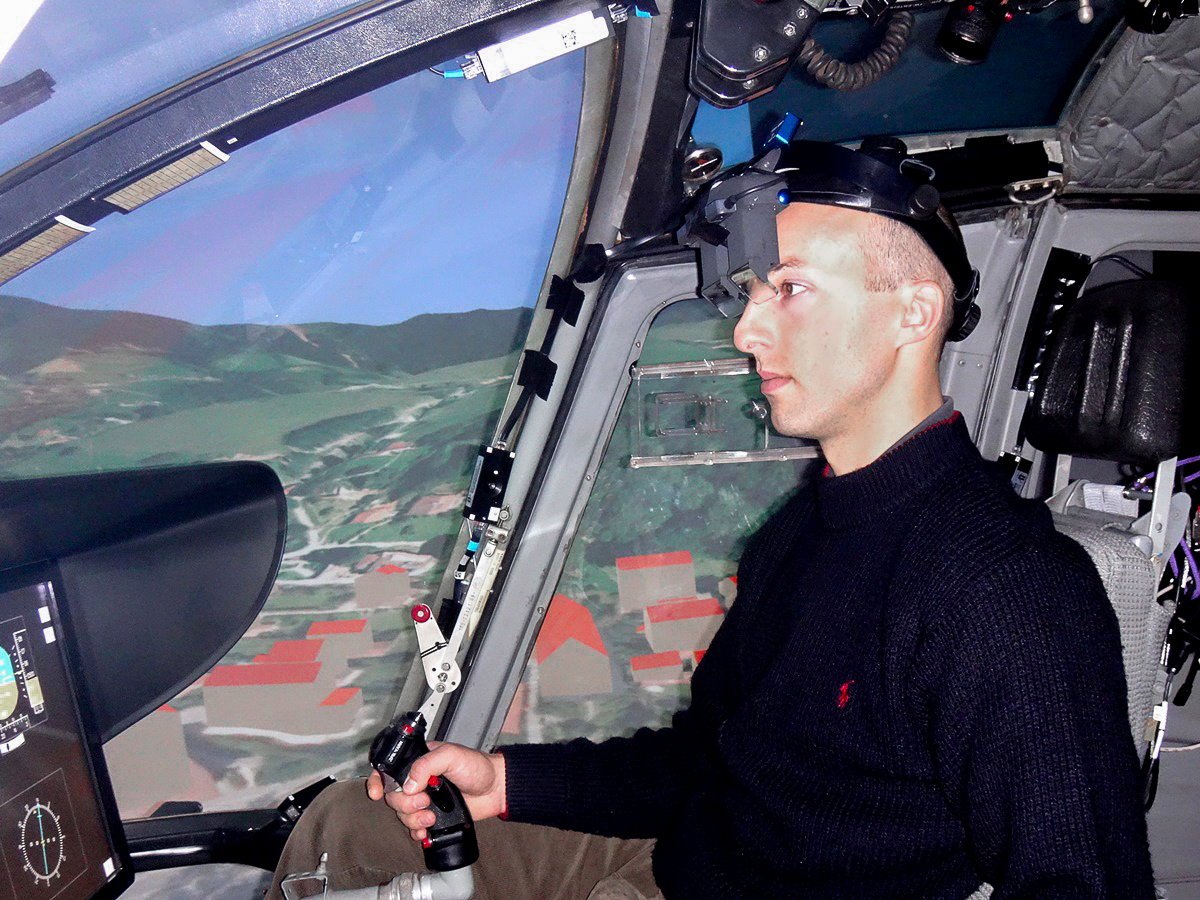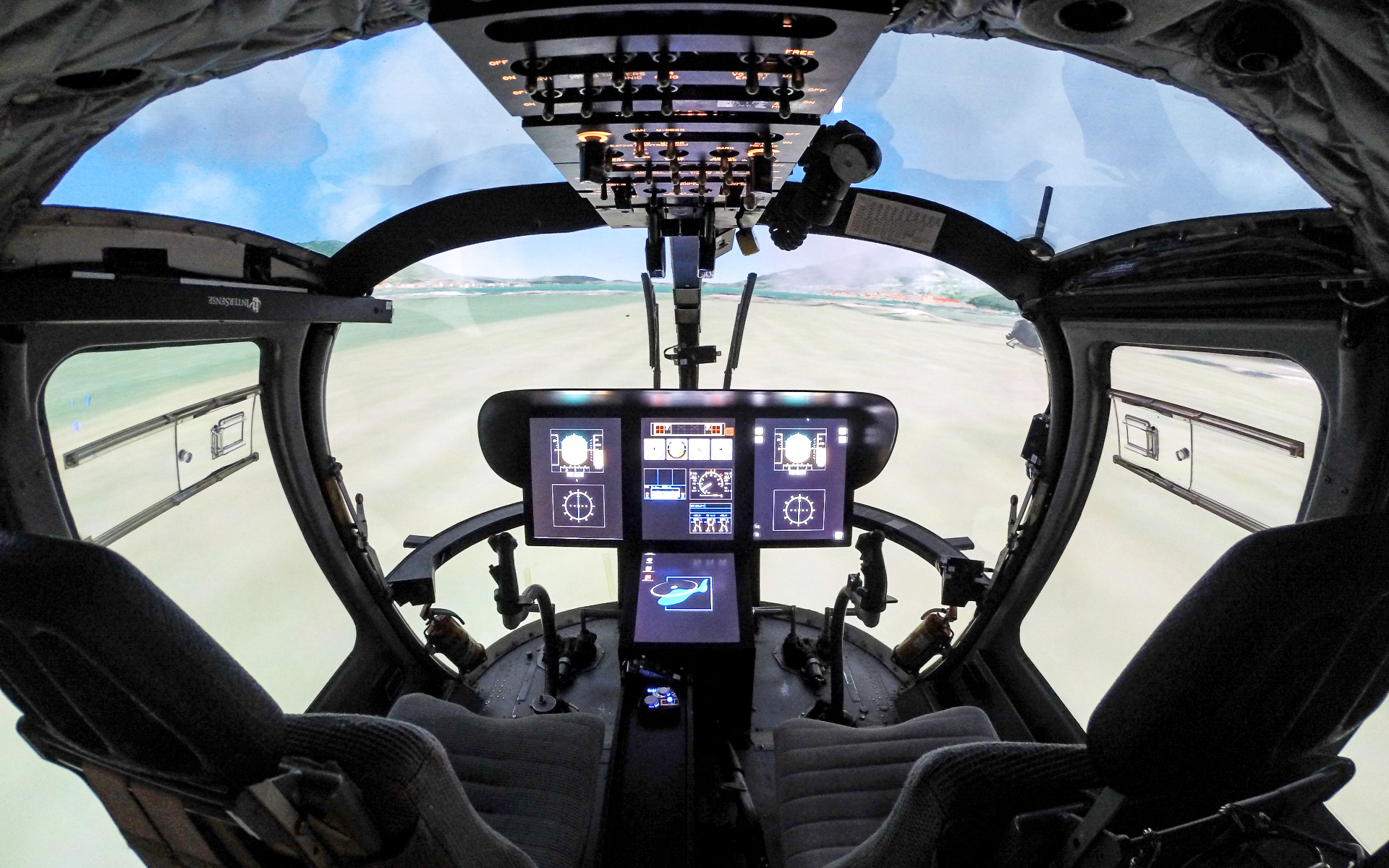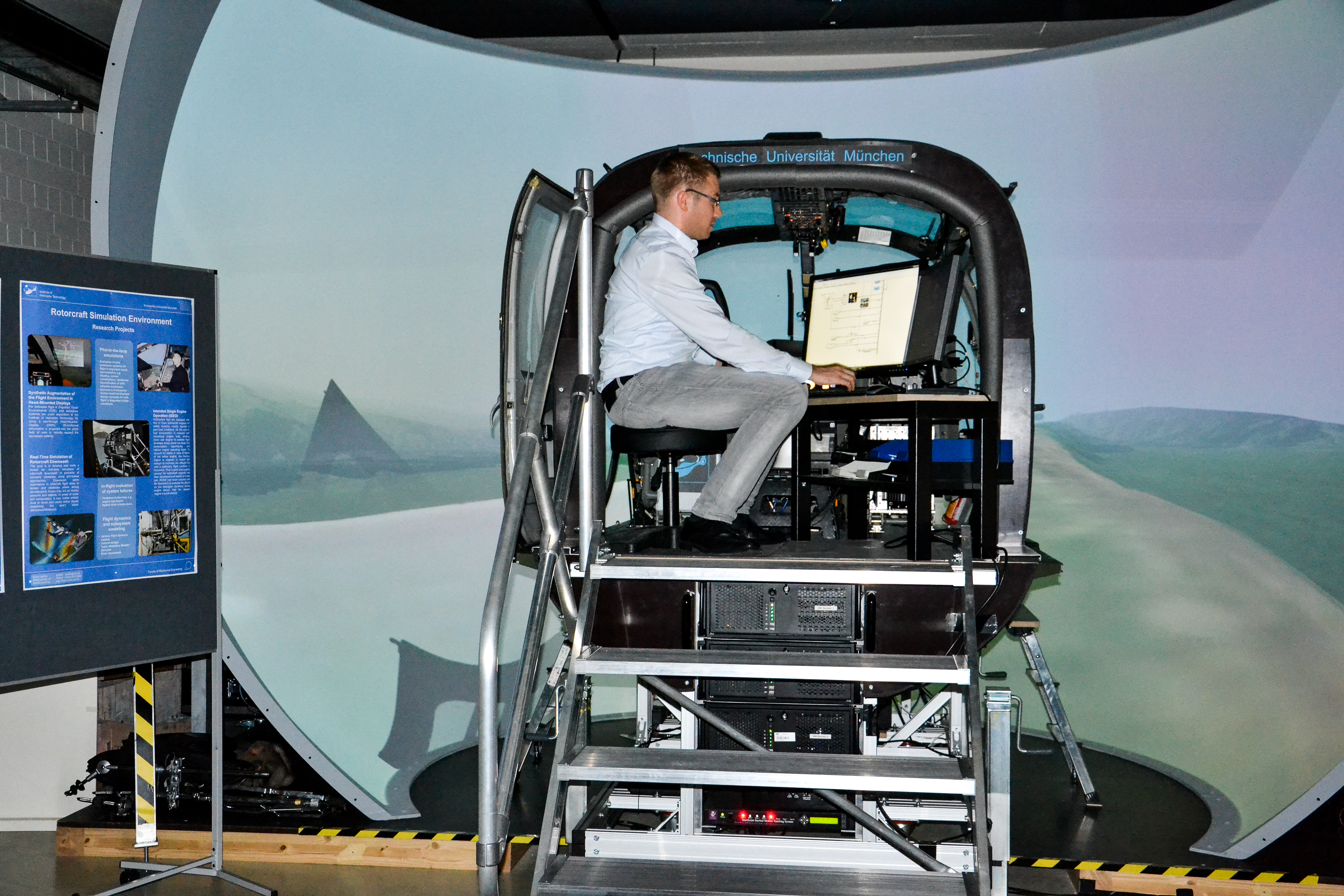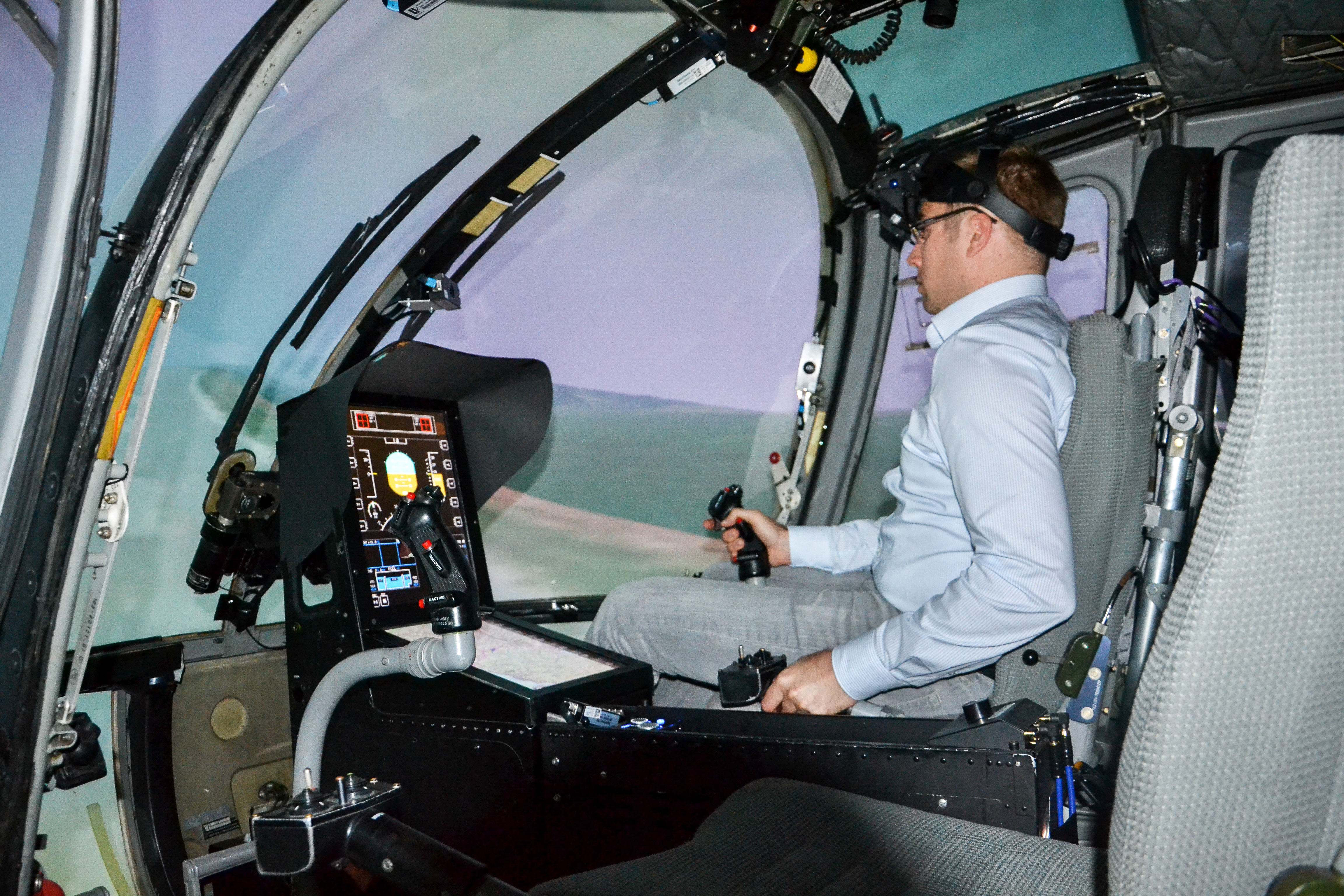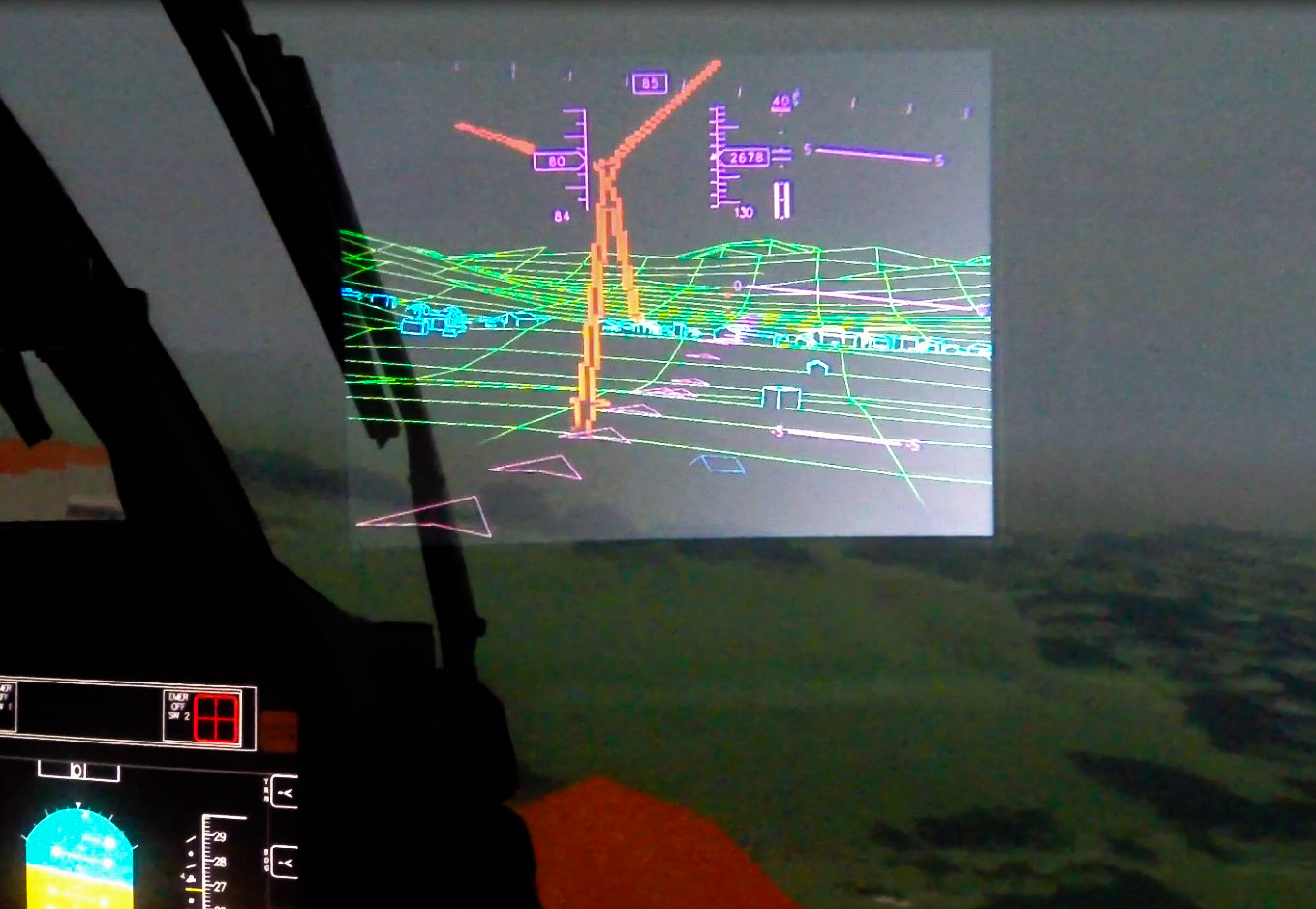Carried out in collaboration with the Institute of Helicopter Technology, the project uses a helicopter-mounted LIDAR (Light Detection and Ranging) system to create virtual images of upcoming hazards and other obstacles. This signal data is then processed onboard the helicopter and transmitted to the transparent head-mounted display worn by pilots.
“Databases containing obstacles and terrain data are used together with real-time data from sensors in order to substitute the lost visual cues in degraded visual environment” Franz Viertler, a professor of aeronautical engineering who worked on the project, told Digital Trends. “The other part of the research then deals with how to best visualize the data for the pilot in order to enable a safe flight. The head-mounted display is a perfect means to do this, because the pilots can keep their eyes out of the window, while they get additional information about hazardous obstacles.”
As part of the study, sixteen professional helicopter pilots were given the chance to try out the head-mounted display during simulator flights. Pilots were found to fly more quickly and safely when they were using the augmented reality displays — with the most noticeable results coming when they were flying in extremely poor visibility conditions.
Despite these promising results, however, Viertler notes that there is still work to be done before this tech can be rolled out in the real world. Part of this is technological, but a bigger factor will be the legal tests it needs to undergo. “The certification of this technology in the field of aviation requires additional time and effort,” he says. “Thus air rescue providers or other potential operators will have to wait about five to ten years until they can benefit from this technology.”
Hopefully it will be well worth the wait.
